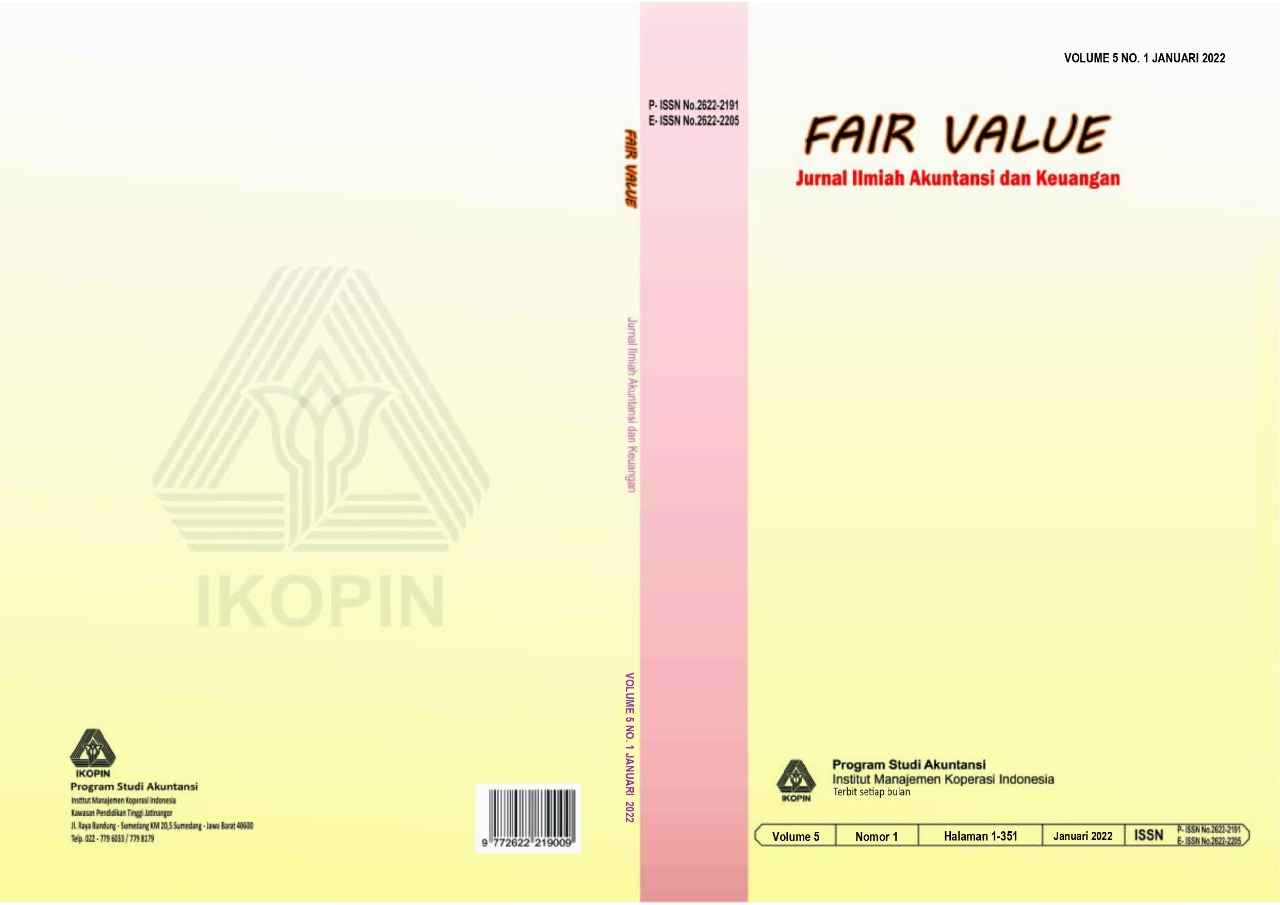Pengujian akurasi model regresi logistik multinomial untuk memprediksi keberhasilan mahasiswa di perguruan tinggi menggunakan r
Main Article Content
Abstract
Higher education institute should have maintained its student’s success in their academic field. Therefore, higher education institute should make a model to predict its success as early as possible. To have such model, the impacting factors should be determined, which factor are in the forms of continuous dan categorized data. This research is aimed to build logistic regression model based on compounded data from continuous and categorized data, which then test the model accuracy to predict the student’s success in such institute. Research data is using 68 student’s data. There are 6 research steps, first, data preparation and collection, second, data analysis, third, building the logistic multinomial regression model, fourth, data testing and validation, fifth, measure the model accuracy, and the sixth step is drawing the conclusion based on the analysis output. The result of prediction analysis dan accuracy test using logistic multinomial regression is the best model with significant factors that influence the study time are gender, department and selection track, while prediction accuracy model for each study time response variable is 96.4%.
Article Details
References
Bi, G., Li, R., Liang, J., Hu, Z., & Zhan, C. (2020). A nomogram with enhanced function facilitated by nomogramEx and nomogramFormula. Annals of Translational Medicine, 8(4).
Goodwin, B. (2011). Simply better: Doing what matters most to change the odds for student success. ASCD.
Guswandi, D., Yanto, M., Hafizh, M., & Mayola, L. (2021). Analisis hybrid decision support system dalam penentuan status kelulusan mahasiswa. Jurnal RESTI (Rekayasa Sistem Dan Teknologi Informasi), 5(6), 1127–1136.
Heryana, N., Ghassani, F. Z., Usrahmawan, M. A., Juardi, D., & Solehudin, A. (2020). Kajian model prediksi ketepatan pelulusan mahasiswa: Sebuah literatur review. Syntax, 9(1), 54–62.
Lee, M., & Han, J. (2020). Statistical methods and models in the analysis of time to event data. Annals of Translational Medicine, 8(4).
Liang, J., Bi, G., & Zhan, C. (2020). Multinomial and ordinal Logistic regression analyses with multi-categorical variables using R. Annals of Translational Medicine, 8(16).
Nafi’iyah, N. (2016). Perbandingan regresi linear, backpropagation dan fuzzy mamdani dalam prediksi harga emas. Prosiding SENIATI, 291-B.
Nugraha, J. (2014). Pengantar analisis data kategorik: Metode dan aplikasi menggunakan program R. Deepublish.
Purba, M. Y., & Ruslan, S. (2020). Influence compensation, career development and job satisfaction to turnover intention. Dinasti International Journal of Economics, Finance & Accounting, 1(4), 642–658.
Rabbi, F., Khan, S., Khalil, A., Mashwani, W. K., Shafiq, M., Göktaş, P., & Unvan, Y. A. (2021). Model selection in linear regression using paired bootstrap. Communications in Statistics-Theory and Methods, 50(7), 1629–1639.
Rizki, N. A., Fendiyanto, P., & Jariah, A. (2020). Perbandingan klasifikasi penjurusan peserta didik pada model diskriminan dan regresi logistik multinomial. METIK JURNAL, 4(2), 49–54.
Santosa, R. G., & Chrismanto, A. R. (2018). Perbandingan akurasi regresi logistik dengan regresi multinomial untuk prediksi kategori ip mahasiswa jalur prestasi. JEPIN (Jurnal Edukasi Dan Penelitian Informatika), 4(2), 99–107.
Sarwono, J. (2013). 12 jurus ampuh SPSS untuk riset skripsi. Elex Media Komputindo.
Utama, M. B. R., & Hajarisman, N. (2021). Metode pemilihan variabel pada model regresi poisson menggunakan metode nordberg. Jurnal Riset Statistika, 1(1), 35–42.
Zhou, Z.-R., Wang, W.-W., Li, Y., Jin, K.-R., Wang, X.-Y., Wang, Z.-W., Chen, Y.-S., Wang, S.-J., Hu, J., & Zhang, H.-N. (2019). In-depth mining of clinical data: The construction of clinical prediction model with R. Annals of Translational Medicine, 7(23).

